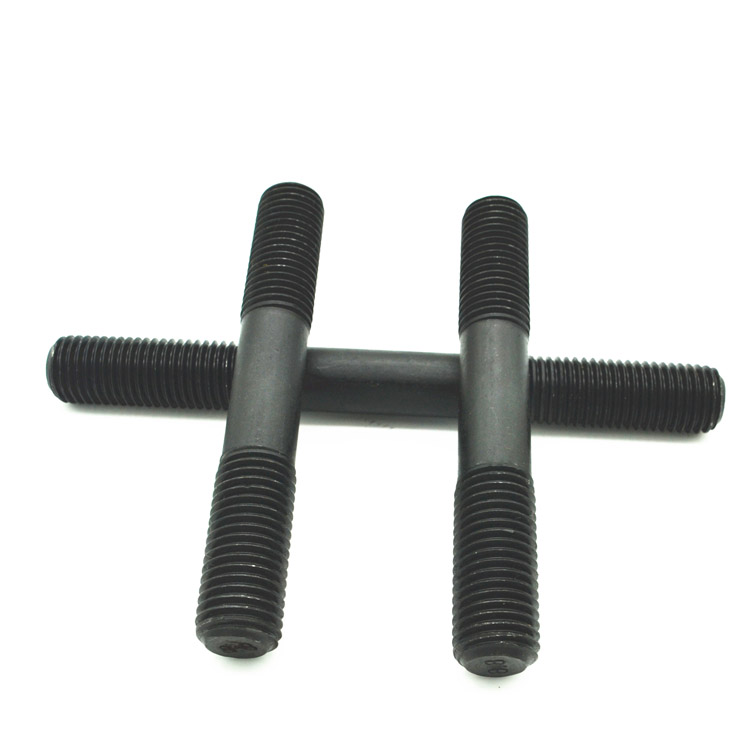best stud bolt right and left hand dual thread
डिस . 06, 2024 21:19 Back to list
best stud bolt right and left hand dual thread
Understanding Best Stud Bolt with Right and Left Hand Dual Thread
Introduction
Stud bolts are essential components in the construction, automotive, and manufacturing industries. They serve critical roles in fastening and securing various structures, machinery, and equipment. Notably, stud bolts come in various configurations, including single-threaded and dual-threaded (right and left hand). The concept of right and left-hand dual threads brings unique benefits and applications, making them a popular choice for specific engineering tasks. This article delves into the significance, benefits, and applications of dual-thread stud bolts.
What is a Stud Bolt?
A stud bolt is a type of fastener characterized by a long threaded rod with threads on both ends and a smooth shank in between. They are typically used in conjunction with nuts and are frequently employed in situations where a strong and durable connection is required. Stud bolts provide higher tensile strength than standard bolts due to their design, making them suitable for high-pressure environments.
Right and Left-Hand Threads An Overview
Standard threaded fasteners have right-hand threads, which are tightened by turning clockwise. However, left-hand threads work in the opposite direction and are tightened by turning counterclockwise. Dual-thread stud bolts incorporate both right and left-hand threads in a single bolt, allowing for versatility in installation and securing components.
Benefits of Dual Threads
best stud bolt right and left hand dual thread

1. Versatility Dual-thread stud bolts enable versatility in various applications. They allow for the connection of components where rotational movement is expected, such as in rotating machinery or equipment. By integrating both right and left-hand threads, manufacturers can use the same fastener for different purposes, reducing the need for inventory.
2. Enhanced Security The combination of left and right-hand threads can significantly enhance the security of a fastening system. In systems subject to vibrations, where traditional fastening methods may loosen over time, having opposing threads can help maintain their integrity. The interaction of the two threads helps to lock the bolts in place, making them less prone to loosening under dynamic conditions.
3. Efficiency in Assembly Utilizing dual-thread stud bolts can improve assembly efficiency. Engineers and technicians can rotate the stud to engage the appropriate pre-existing threads, simplifying the assembly process. This reduces the time spent on installation and minimizes the risk of damage to components.
4. Applications in Niche Industries Dual-thread stud bolts find a crucial place in various niche applications. Industries such as aerospace, marine, and automotive leverage them in environments where components may rotate or experience significant pressure changes. For instance, in turbocharger applications, these bolts help secure both the compressor and turbine sections, where space is limited, and the conditions are extreme.
Choosing the Right Stud Bolt
When selecting stud bolts for a project, several factors must be considered, including the material strength, thread diameter, and length. Additionally, the specific application will dictate whether right, left, or dual threads are required. It is crucial to consult with mechanical design engineers to ensure the chosen fasteners meet all technical requirements and regulations.
Conclusion
The evolution of fastening technology has enlightened industries about the importance of using the right components for the job. Dual-thread stud bolts are a testament to this innovation, providing engineers and designers with enhanced versatility, security, and efficiency. As industries continue to evolve and require more robust solutions, the adoption of dual-threaded fasteners will likely increase. Understanding the role of right and left-hand dual-thread stud bolts paves the way for better design and implementation in various mechanical systems, ensuring secure and dependable connections that withstand the test of time.
Latest news
-
Premium Cabinet Bolts Supplier | Wholesale & Custom Solutions
NewsAug.24,2025
-
Reliable Axle Nuts Supplier | Quality & Precision Fasteners
NewsAug.23,2025
-
Durable Bolts for Lawn Mower Handle - Top Supplier & Manufacturer
NewsAug.22,2025
-
High-Quality Bolts for Lawn Mower Handle Supplier & Manufacturer
NewsAug.21,2025
-
Reliable Axle Nuts Supplier | High-Quality Automotive Parts
NewsAug.19,2025
-
Premium Wire Bolts Suppliers | Durable & Reliable Fasteners
NewsAug.18,2025
